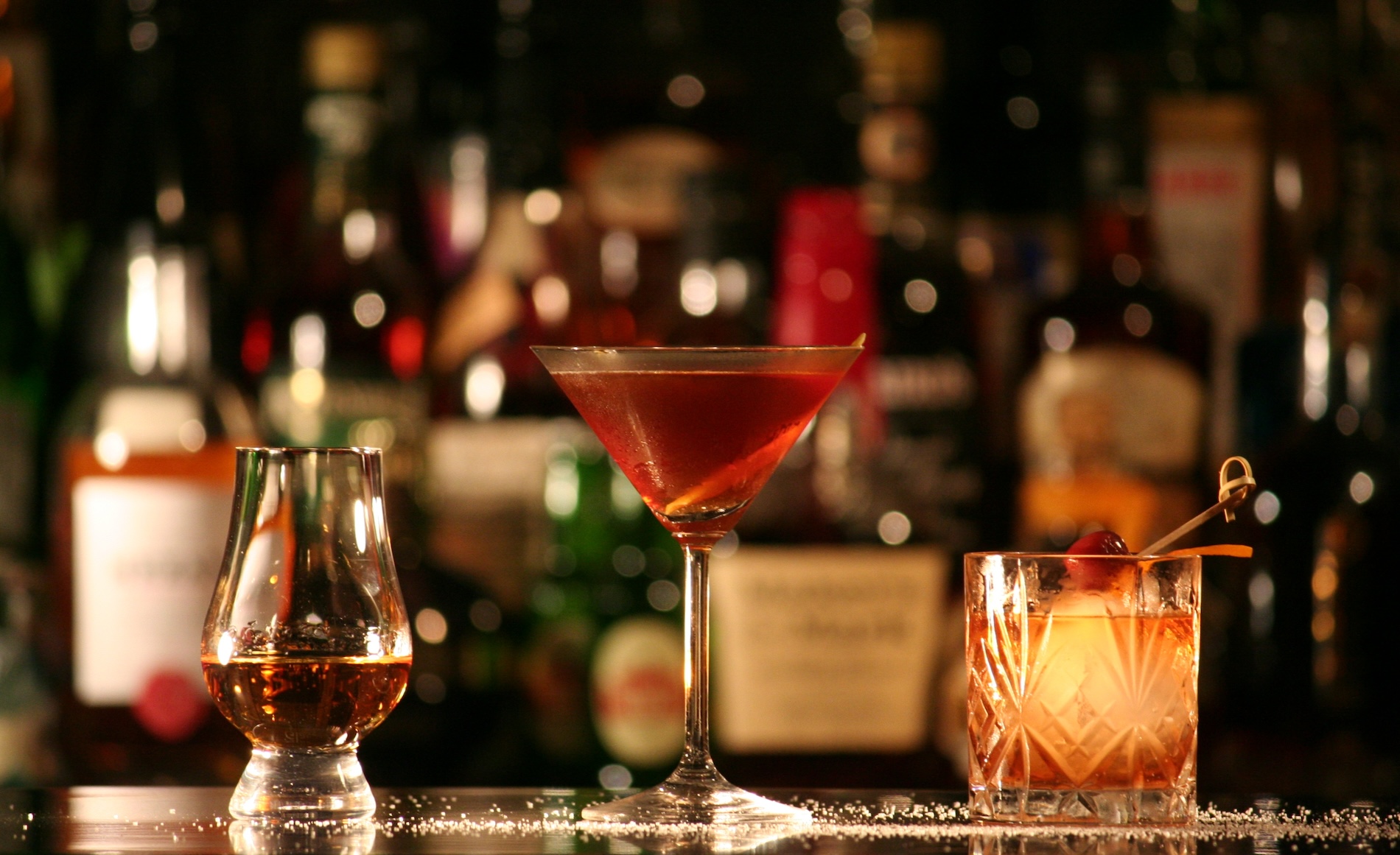What Is a Speakeasy?
Behind a secret unmarked wall is the passage to one of the coolest spots to get a drink: the speakeasy.
Originally a secret hangout where people could grab a strong drink or a glass of beer during the Prohibition era in the United States, modern speakeasies have become a popular vintage bar experience. What exactly is a speakeasy, and how do modern ones keep the original speakeasy culture alive? Let’s get into it.
What Is a Speakeasy Bar?
According to Britannica, a speakeasy, also known as a blind pig or blind tiger, was originally an illicit establishment that sold alcoholic drinks.

Source: Kent Wang/Flickr
The speakeasy gained popularity in the United States during the Prohibition era (1920-1933) because it offered a secret way for people to enjoy outlawed drinks. The Prohibition bar fell out of popularity once alcohol became legal to sell, making the secret bar less necessary.
The Characteristics of a Speakeasy
Speakeasies were a product of secrecy, which meant that the manufacture, transportation, and sale of alcoholic beverages had to be done in the shadows.

Source: State Library of Queensland/Picryl
Often hidden in plain sight, the speakeasy entrance was typically hidden behind objects in common spaces like laundromats or barbershops. Speakeasy rooms were dimly lit small, crowded spaces that made it difficult to identify patrons as live music and entertainment played. Elaborate cocktails were also a speakeasy staple.
Why Is it Called a Speakeasy?
The word “speakeasy” came from the “speak-softy shops,” which were illegal 19th-century bars in England and Ireland (via Britannica).

Credit: John Pratt/Keystone Features/Getty Images
Other sources believe the term came from the customers who were often instructed to “speakeasy” or “whisper” when discussing the bar or in the establishment to avoid alerting suspicious eyes (alcohol.org). Speakeasies were only discovered through word-of-mouth, meaning everyone had to be careful when talking about the establishment in public.
How Popular Were Speakeasies in the Roaring Twenties?
The 1920s bar was extremely popular during the Prohibition era as people wanted to indulge in risky behaviors. In New York City, there were an estimated 20,000 to 100,000 speakeasies.

Source: The U.S. National Archives/Picryl
With a large number of speakeasies across the country, it is not surprising that there was a wide range of themes. From the modest setups that served moonshine in basement speakeasies to glamorous nightclubs that embodied the Roaring Twenties, the speakeasy theme always promised a fun night out.
The Best Well-Known Secret
Corruption was common during the Prohibition era. While safety precautions were in place to keep the speakeasy and its patrons safe from police raids, many speakeasy owners bribed police and government officials to turn a blind eye.

Source: Wally Gobetz/Flickr
The 21 Club in New York, originally named the Red Head, was notable for its secretary. A system of levers was used to tip the shelves of the bar, sweep the liquor bottles through a chute, break the bottles, and allow the alcohol to flow into the city’s sewers (via 21 Club History).
Speakeasies Were a Girl’s Best Friend
While speakeasies are a notable part of U.S. history, they had a lasting impact on American life.

Source: Le Salon de la Mappemonde/Flickr
Before Prohibition, it was highly uncommon for women to drink alcohol in public. According to Lip Magazine, women who did appear drunk in public were labeled as immoral or sex workers. Speakeasies catered to female patrons with restaurants, dancing, and bathrooms to check their hair and makeup. These changes continued after the end of Prohibition.
Speakeasies Popularized Craft Cocktails in the U.S.
We all have a go-to cocktail when we go to a bar. However, craft cocktails like the Gin Rickey, the Old-Fashioned, and Corpse Reviver wouldn’t be as popular in modern bar culture without speakeasies.

Source: Cocktailmarler/Wikicommons
The quality of alcohol during Prohibition was often poor due to the rush of production. Speakeasy cocktails allowed the bartenders to mask the harsh taste of bootleg liquor.
The Legacy of Speakeasies Today
The legacy of speakeasies lives on today. These secret bars were more than just illicit drinking establishments. They were an essential part of the Roaring Twenties, reflecting the era’s contradictions, creativity, and social changes.

Source: bandistahouston
Speakeasies are also one of the few elements of the decade that still lives on in the modern era. Trends are temporary, but martinis are forever.
Modern Speakeasies
The sale of alcohol is (almost) legal across the U.S., but speakeasies continue to operate today differently.

Source: Cory Wright/Flickr
Unlike the secret bar hidden away from the unknowing public, speakeasies operate as hidden bars or pop-up events that use secrecy and exclusivity to attract customers. With a secret entrance that requires passwords or reservations, these modern speakeasies keep the characteristics of the speakeasy alive and well.
Modern Speakeasies Uphold the Legacy of Speakeasies
Modern speakeasies often focus on the atmosphere and craft cocktails to pay homage to the legacy they continue to uphold.

Source: Alexey Goral/Wikicommons
Speakeasies are known for their creative and innovative cocktails, which means that the bartenders are often skilled mixologists. Their use of high-quality ingredients leads to unique and flavorful cocktails that customers won’t be able to find anywhere else.
You Can Enjoy Speakeasies Today!
If you want a taste of the Roaring Twenties, a speakeasy party is the best way to bring back a sense of nostalgia for a bygone era. Skip the regular bar experience for one that feels exclusive and personalized to your desire for a dazzling night out.

Source: Inga Seliverstova/Pexels
Since speakeasies are not a secret anymore, you can find these exclusive bars online or by asking locals in your area. Chances are there is a speakeasy closer to you than you would have thought.
